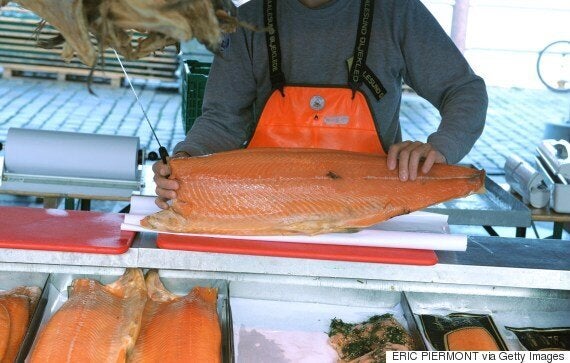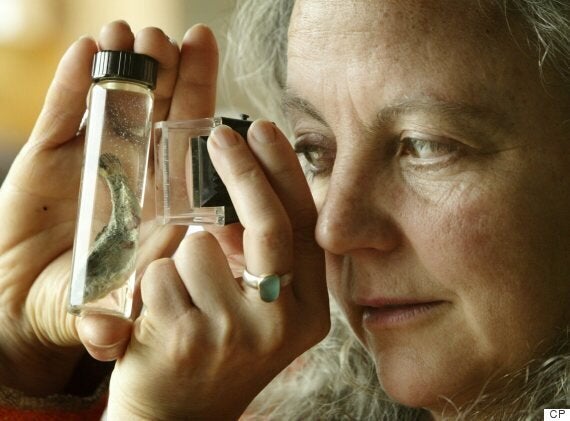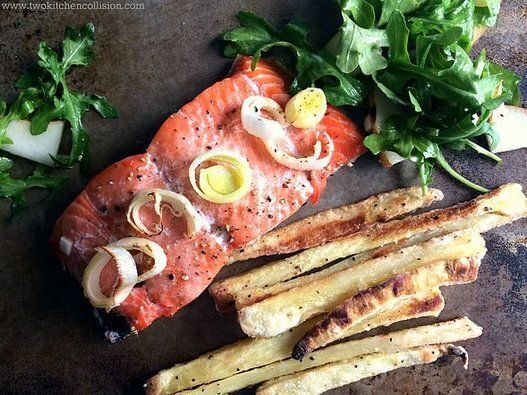There really is no downside to salmon, health wise (please tell us if you find one). High in omega-3 fatty acids, protein and B vitamins, consumers are turning to it more and more to replace their steaks.
But if you live in a part of Canada where farmed Atlantic salmon features prominently at the grocery store, we have some bad news — it’s likely going to get pricier.
Sea lice are eating into supplies of the fish in Norway and Scotland, according to The Guardian. The supply crisis comes after a deadly algae bloom hit Chile, the world’s second-biggest farmed salmon producer.

Global wholesale prices jumped as much as 50 per cent last year, The Guardian reports, as supplies of Atlantic salmon dropped nearly nine per cent.
The Nasdaq Salmon Index, which tracks the price of salmon exported out of Norway, showed that between the beginning of 2015 and the end of 2016, prices rose 34 per cent, from 45 Norwegian krone ($7 Canadian) a kilogram to 68 krone ($11 Canadian).
Farmed salmon itself is partly to blame. Sea lice weren't a big problem until large-scale fish farming started, according to Quartz. This is partially because farmed fish are kept in ocean nets, and the pests die when salmon swim into rivers to spawn.
Many salmon pens are also close to natural habitats, meaning the wild and farmed fish infect each other.

“If you have a lot of fish confined to a small area, the sea lice are endemic ... They build up a large population of sea lice, which then drift out of the sea pen and into local, migrating fish," Glen Spain, regional director for the Pacific Coast Federation of Fishermen’s Associations, told the Seattle Post-Intelligencer.
Higher ocean temperatures due to global warming also boosted lice numbers, according to one study into a 2015 epidemic on B.C. coastal salmon farms, as did resistance to chemicals meant to kill the bugs.
Tiny Norwegian fish that eat sea lice have been proposed as one solution, but Canadian producers can't use them, because cleaner fish have to be native species, according to Quartz.
One big New Brunswick-based aquaculture company said last fall it is developing a technology that uses warm water with a 95 per cent removal rate, according to The Canadian Press.
“We’re expecting the price to remain high for the rest of this year, simply because of the time it takes for young fish to grow to the size that chefs want."
Another Norwegian salmon producer also came up with the idea to build a farm the length of nearly five American football fields where the fish would be exposed to fast ocean currents that would help cut down on sea lice.
But don't expect any relief at the grocery store anytime soon.
Rachel Dobson, the managing director of UK catering and food service buying specialist Lynx Purchasing, told the Financial Times she's seeing the fish served in smaller portions or its disappearance from menus altogether.
“We’re expecting the price to remain high for the rest of this year, simply because of the time it takes for young fish to grow to the size that chefs want," she said.
But those Canadians who eat Pacific salmon might be spared the price increases. Spain, of the Pacific Coast Federation of Fishermen’s Associations, told the Seattle Post-Intelligencer that sea lice haven't been a problem in the Pacific lately.
Another reason to move to British Columbia.
Also on HuffPost
